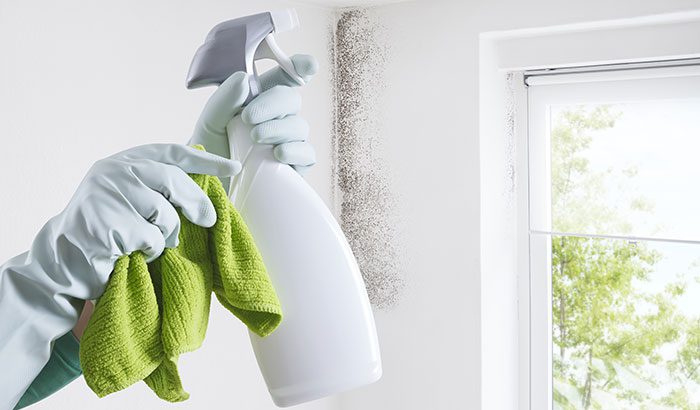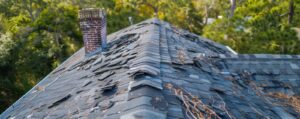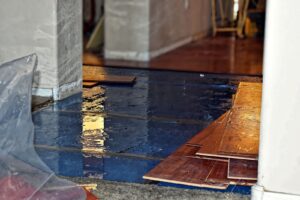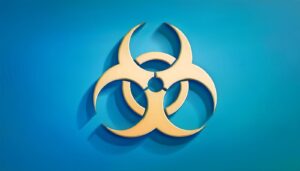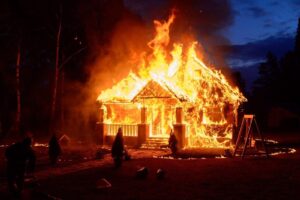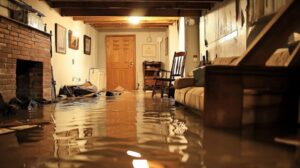If you are wondering if your house has mold or want to know what to look out for in terms of mold damage, you’re in the right place.
Unless you know what you are looking for, mold damage can hide in plain sight, right under your nose. In some cases, it is a minor issue and a quick and easy fix. However, in other, more severe cases, ones where the mold is left untreated for an extended period of time, it can cause significant problems within your property and the occupant’s health.
This is why it is crucial to detect mold right away and have it professionally treated before it becomes a serious issue. Before you can treat mold, you need to be able to find it. And if it is hiding in plain sight, it might be hard to know what you are looking for.
So how do you know what you are looking for (whether or not your house has mold)? What is mold? Did you know that there are more than 100,000 different mold varieties? What are the effects of mold in your home? This is what we are diving into in today’s article and more.
Continue scrolling to learn more about the signs of mold in your home, how to spot it, what to do once you find it, and more.
What is Mold?
Before you can look for mold, you need to know what mold actually is. Mold is a part of the fungi family and thrives in the outdoors. It plays a massive role in the ecosystem by breaking down dead organic matter, such as dead plants and animals, and returning the nutrients to the surrounding environment.
Like all other living organisms, mold requires moisture and food to grow and thrives in warm, damp areas. It’s when mold gets indoors that it becomes problematic. Mold loves to make your attic, basement, bathroom, and other areas in your home their home too.
When mold gets inside, it makes you cough, sneeze, and sniffle. No, you are not suffering from allergies or coming down with a cold — you are experiencing the symptoms of mold inside your home!
Mold spores can easily and quickly float through the air, attaching to windows, your HVAC system, doors, pets, humans, clothing, and more. It truly does not take much for mold to find its way into your property.
Different Types of Mold
As mentioned above, more than 100,000 types of mold are found inside and outside the home. Each of these types of mold can fit into one or more of the following categories:
- Allergenic — These molds can trigger allergic reactions and asthma attacks in people with these ailments and may cause slight symptoms in those who do not suffer from allergies.
- Pathogenic — These types of mold usually cause symptoms only in people with a deficient immune system or individuals with serious illnesses or recovering from one.
- Toxigenic — These molds are considered the most dangerous and can cause extreme health problems, even in healthy people.
Today, we will just dive into the 12 most common kinds of mold found in the home:
- Acremonium — There are close to 100 strains of Acremonium, a toxigenic mold, found in damp drain pans or condensation lines of air conditioners or humidifiers. It can appear in various colors, such as gray, white, or pink, and it looks dry and powdery as it matures.
- Alternaria — Alternaria is an allergenic mold often found in showers and tubs or under sinks. It has a velvety appearance and brown hairlike filaments.
- Aspergillus — Aspergillus, an allergenic mold, can grow on just about any damp surface. This green, white, or grey spotted mold can be tricky to pinpoint since there are over 180 Aspergillus mold strains that can appear in various colors.
- Aureobasidium Pullulans — Aureobasidium is an allergenic type of mold that is found under stripped wallpaper and also grows on painted surfaces or bare wood. Young Aureobasidium begins gray or light pink, but as it matures, it turns a deep blackish-brown color. This type of mold loves humid areas, such as bathrooms and kitchens.
- Chaetomium — Chaetomium is an allergenic and pathogenic mold most likely to appear after flooding or water damage. Chaetomium thrives in dark, humid areas, making interior wall studs an ideal home.
- Cladosporium — Cladosporium, another allergenic mold, grows well on indoor textiles, like carpeting and furniture, though it can also grow in other places, like inside cupboards or beneath sinks. It comes in various shades of brown and green and has a soft appearance.
- Fusarium — Not all types of mold need warmth to survive. Fusarium can grow and spread even in close to freezing temperatures and can appear just about anywhere, especially in soft textiles. Most strains are allergenic; however, a few strains are highly toxic. It often appears as reddish or pinkish spots.
- Mucormycetes — Mucormycetes are filamentous mold first appearing as light gray or white fuzzy puffs. Mucor likes to grow on decaying vegetables and fruits but can also thrive in an air conditioner’s condensation lines and drip pans. It is a robust and allergenic mold.
- Penicillium — Penicillin is an amazing antibiotic and crucial to the health of many. However, one strain of penicillium is both allergenic and pathogenic. This greenish-blue velvety mold can appear in homes that have had flooding or another type of water damage.
- Stachybotrys — Stachybotrys is commonly referred to as “black mold” thanks to its dark greenish and black color. This toxigenic mold thrives in wet conditions and is typically found on cellulose-type materials like damp leaves, drywall, wood, and more.
- Trichoderma — Trichoderma is an allergenic mold, appearing as small white and dark green puffy patches that grow rapidly. It thrives in wet or damp areas, such as around the base of your shower or a leaky window. This mold also releases an enzyme that results in wood rot.
- Ulocladium — Ulocladium has some strains that are allergenic, while others are pathogenic. This black-colored mold is often confused with Stachybotrys (since the two often grow alongside each other) and needs a constant supply of water to survive.
Mold in My House: 5 Signs to Look Out For
Spotting mold as soon as possible is key to quick and easy mold remediation. Here is everything you need to know:
- Visible Spores — Of course, the most obvious sign your house has mold is if you see mold growing. While visible spores make it easy to spot, they can sometimes mean you have a huge problem on your hands.
- Musty Odor — A musty smell could indicate a mold problem. Often, even if you can’t see it, but you can smell it, mold is present. Pinpointing the smell of mold can be challenging because different mold types have different scents. If you notice an unusual smell, it could be a sign you have a mold problem and is typically worth looking into.
- Unexplained Health Issues — Nearly one-third of Americans have genes that make them susceptible to mold-related health issues. However, even healthy individuals can become sick when exposed to various types of mold, such as black mold. We will dive into some of the common symptoms related to mold exposure later in today’s article.
- History of Flooding, Leaks, or Unwanted Water Collection — Areas in your property that tend to flood, collect water, or any pipes that leak could be susceptible to mold. Of course, it does not necessarily mean there’s a mold problem, only that it’s possible. Here are some signs of flooding or that water is collecting in your house:
- Discolored spots or stains on your ceiling, walls, or floor.
- Bouncy, squishy, or soft areas on any hard flooring.
- Peeling or bubbling paint or wallpaper on walls or ceiling.
- Considerable Condensation and Moisture — Do you ever see condensation on metal pipes, windows, and various glass items throughout your property? If so, you have a moisture and condensation control issue on your hands. Mold thrives in humid places where condensation tends to build up. If you are dealing with humidity problems, you could also be dealing with a mold problem.
Symptoms of Mold Exposure
Some types of fungi are edible; however, other types, like mold, can be harmful to the health of animals and humans. Ingesting or even inhaling some types of mold can cause serious health issues.
Of course, mold exposure does not guarantee you’ll become ill; but it does mean you could get sick. If you notice any of the following symptoms, it’s best to check for mold and schedule an appointment with your doctor.
Here are some common symptoms of mold exposure:
- Sneezing.
- Congested or runny nose.
- Cough and postnasal drip.
- Itchy nose, throat, or eyes.
- Watery eyes.
- Dry, scaly skin.
- Headache.
Where Does Mold Grow and Where to Look
Mold can grow in just about any place that has a lot of moisture, such as leaky windows, roofs, pipes, or where there has been flooding. It grows well on various paper products like cardboard, ceiling tiles, and wood products. Mold also adheres itself to dust, drywall wallpaper, painted items, insulation, carpet, upholstery, and other fabric items.
Check for mold in the following places:
- Showers
- Bathtubs
- Sinks
- Cupboards and cabinets
- Basements
- Crawl spaces
- Utility closets
- Areas with pipes
- Windows
- Interior walls
- Attics
Clearly, mold can grow in hard-to-reach places throughout your home. Accessing some of these areas may require the help of professional and expert attention. The best way to catch mold early and prevent mold damage is to regularly monitor these areas.
I Found Mold in My House; Now What?
Some homeowners think, “Mold in my house? I’ve got this!” and opt to tackle the issue themselves. Mold is a precarious organism that requires an expert eye and professional equipment and methods to remediate. If you find mold in your home, contact a professional right away.
Here are six reasons why you should leave mold remediation to the pros:
- Experts can accurately assess the mold issue at hand.
- Professionals understand health risks and take necessary precautions.
- Specialists have a thorough understanding of the treatment process.
- Experts know how to prevent further mold issues.
- Professionals have insider tips and tricks with their years of experience.
- You’ll end up saving money and time by hiring a specialist initially.
Have a Mold Problem? Call Total Flood & Fire Restoration Today!
If you suspect that your property might have a mold problem or are certain your house has mold, make sure to contact the mold remediation specialists at Total Flood & Fire Restoration.
Mold can be extremely toxic, posing a serious threat to your health. Moreover, it can be severely hazardous to the structural integrity of your property. If you notice any of these signs, such as condensation, a musty scent, discoloration, or even the smallest bit of mold growth, make sure to call our trusted team today.
Our knowledgeable crew has years of experience with many different types of mold commonly found in Utah, which means we have the best methods and tools to remedy the issue. Not only will we clean up the mold and restore any damaged areas, but we will also find the root cause and take all necessary preventative measures against another mold infestation.
We also help our customers with other home disaster remediation and restoration services, such as water, fire, and smoke, biohazard cleanup, storm damage, sewage damage, and more. Disaster doesn’t wait for a convenient time (not that there is one) and will strike whenever, which is why we offer 24/7 emergency restoration services. We are dedicated to getting your home or business back to its former state as quickly as possible.
Our team is comprised of licensed, trusted experts, ensuring the best quality service and efforts to keep you and your property protected and healthy. We are Utah’s go-to professionals and are ready to help those in Northern Utah, including Salt Lake City, Farmington, Layton, Heber City, Orem, Saratoga Springs, Toole, and more. Contact our team today to learn more.

